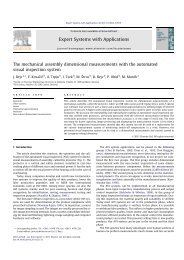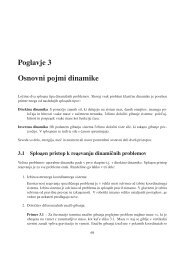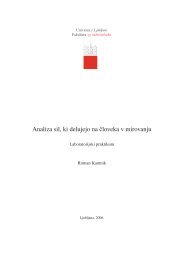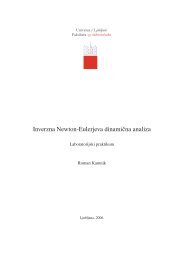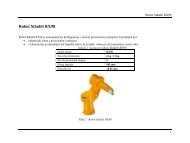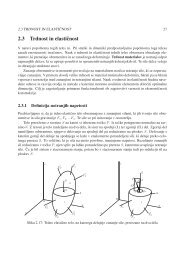ARM Processor Instruction Set
ARM Processor Instruction Set
ARM Processor Instruction Set
You also want an ePaper? Increase the reach of your titles
YUMPU automatically turns print PDFs into web optimized ePapers that Google loves.
<strong>ARM</strong> <strong>Processor</strong> <strong>Instruction</strong> <strong>Set</strong><br />
Preliminary - Unrestricted<br />
5.14 Coprocessor register transfers (MRC, MCR)<br />
Note:<br />
31 28 27 24 23<br />
Cond<br />
Use of the MRC or MCR instruction on the <strong>ARM</strong> processor to a coprocessor other than<br />
number 15 will cause an undefined instruction trap to be taken, which may be used to<br />
emulate the coprocessor instruction.<br />
The instruction is only executed if the condition is true. The various conditions are<br />
defined at the beginning of this chapter. The instruction encoding is shown in ➲Figure<br />
5-25: Coprocessor register transfer instructions.<br />
This class of instruction is used to communicate information directly between the <strong>ARM</strong><br />
processor and a coprocessor. An example of a coprocessor to processor register<br />
transfer (MRC) instruction would be a FIX of a floating point value held in a<br />
coprocessor, where the floating point number is converted into a 32-bit integer within<br />
the coprocessor, and the result is then transferred to a processor register. A FLOAT of<br />
a 32-bit value in a processor register into a floating point value within the coprocessor<br />
illustrates the use of a processor register to coprocessor transfer (MCR).<br />
An important use of this instruction is to communicate control information directly from<br />
the coprocessor into the processor CPSR flags. As an example, the result of a<br />
comparison of two floating point values within a coprocessor can be moved to the<br />
CPSR to control the subsequent flow of execution.<br />
The <strong>ARM</strong> processor has an internal coprocessor (#15) for control of on-chip functions.<br />
Accesses to this coprocessor are performed during coprocessor register transfers.<br />
21<br />
20<br />
19<br />
16<br />
15<br />
1110 CP Opc L CRn Rd CP# CP 1 CRm<br />
12<br />
11<br />
8<br />
Figure 5-25: Coprocessor register transfer instructions<br />
7<br />
5 4 3<br />
Coprocessor operand register<br />
Coprocessor information<br />
Coprocessor number<br />
<strong>ARM</strong> source/destination register<br />
Coprocessor source/destination register<br />
Load/Store bit<br />
0 = Store to Co-<strong>Processor</strong><br />
1 = Load from Co-<strong>Processor</strong><br />
Coprocessor operation mode<br />
Condition field<br />
0<br />
5.14.1 The coprocessor fields<br />
The CP# field is used, as for all coprocessor instructions, to specify which coprocessor<br />
is being called upon.<br />
5-48<br />
<strong>ARM</strong>7500 Data Sheet<br />
<strong>ARM</strong> DDI 0050C



